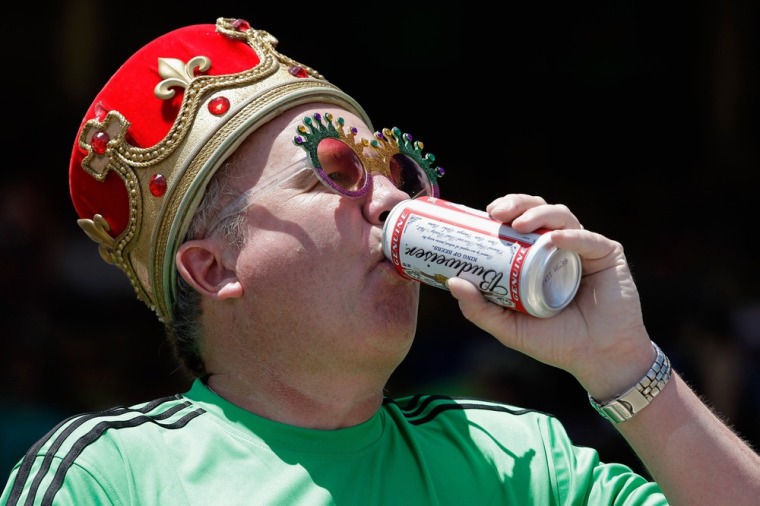It's strange to think that someone actually invented beer, that it hasn't just always been there, like centrifugal force or oxygen. But it's true: 6,000 years before Jesus even hit the scene, the Babylonians — people living in the area that is modern-day Iraq — began fermenting barley in the glittering heat of the Mesopotamian dessert, and making clay vessels in which to store the frothy brew and trade it with neighbors.
I don't know what they charged for the beer — two jugs for one goat? — but I can't imagine it cost more than we're paying today, when the average prices for a case are $20.34 at the supermarket and $19.92 at a convenience store, up 3 percent and 2.3 percent respectively from a year ago.
For a couple of years, I mostly kept my mouth shut as my bottled buddies crept up in price, though I sometimes moaned to the cashier even as I passed her my credit card. But once a case crossed that $20 threshold, something snapped. I started to feel wronged, and resentful. More constructively, I began to wonder why my brew was getting more expensive. Turns out, a lot goes into the answer.
Three years ago, Bavaria, the largest state in Germany, suffered a bad hops harvest. These green, pine cone-shaped flowers are the essential ingredient in brewing beer, and because Germany alone provides roughly 35 percent of the world's supply of hops, the crop shortage created an immediate and significant problem for beermakers who found themselves suddenly scrabbling to locate this key ingredient. And as we all know, when supply decreases and demand doesn't, prices rise. To cover those new higher costs, brewing companies added a few cents to the price of our beer.
Going against the grain ... and Mother Nature
The other key commodity that goes into our beer are grains — most often malted barley, but sometimes wheat or even rice. And like hops, or any other crop, they're vulnerable to inclement weather or attacks from swarming insects.
I'm going to be honest here and say that I, for one, don't pay much attention to weather patterns in my own city, much less in places like Russia or Asia.
But apparently I should, as a heat wave in the Ukraine can directly add to the cost of beer — and is doing so right now. Global grain production is down, thanks in large part to unusually brutal heat in the former Soviet Union and droughts in China. See the previous discussion of supply and demand, but in this case, the effects are wider, because unlike hops, which is mostly used in beer, we've got a few other uses for grains. Between people food, animal food, biofuels and of course, our beer — along with a steadily growing world population that wants to consume them — yes, another few pennies are getting added onto the cost of every beer.
Then there's transportation. All those raw materials have to be shipped to the brewers, and the finished products shipped to the retailers who sell it to us, all of which requires fuel. Fuel, that, until very recently, had been getting steadily more expensive this year. Yet another addition to the price we pay for our beer.
What goes up ... doesn't come down
Beyond simple responses to these market forces, price increases may also be a conscious move on the part of the large beer manufacturers. According to Benj Steinman at Beer Marketers Insights, Anheuser-Busch InBev, for example, made a "strategic shift," to shrink the price gap between the company's more and less expensive brands to avoid "trade down," a term used to describe the consumer's tendency to purchase the less expensive of two beers manufactured by the same company. Given that Anheuser-Busch InBev controlled 48.3 percent of the U.S. beer market in 2010, any strategy they follow is sure to have wide effects. It's likely other manufacturers will follow suit, further raising the cost of our beer.
Lastly, there is a frustrating but not entirely surprising explanation for the high cost of beer these days — greed. As Mike Reinhardt of thankheavenforbeer.com explains, "Once a consumer gets used to paying a certain amount, the spike in price goes up pretty quickly, but the going down is pretty slow." A bad hops or grain crop may cause a rise in price, but once the market adjusts, and even once raw materials become more available, companies still tend to charge the same price as during the shortage. "There's just no going back," Reinhardt says.
Sigh. What a bummer. Someone, please, pass me a beer.
More from DailyFinance:
